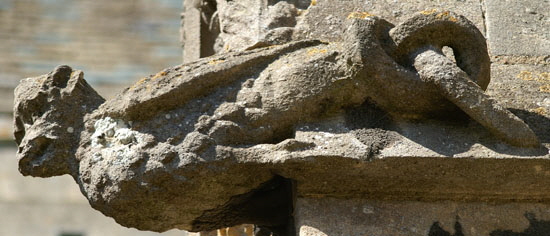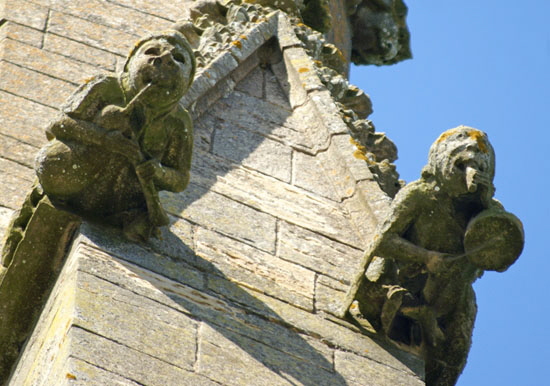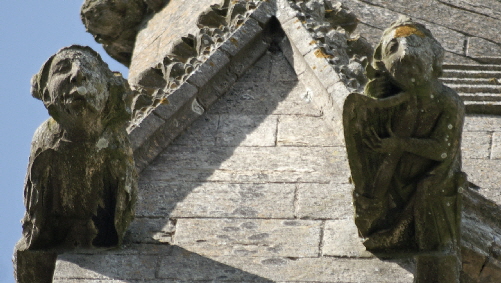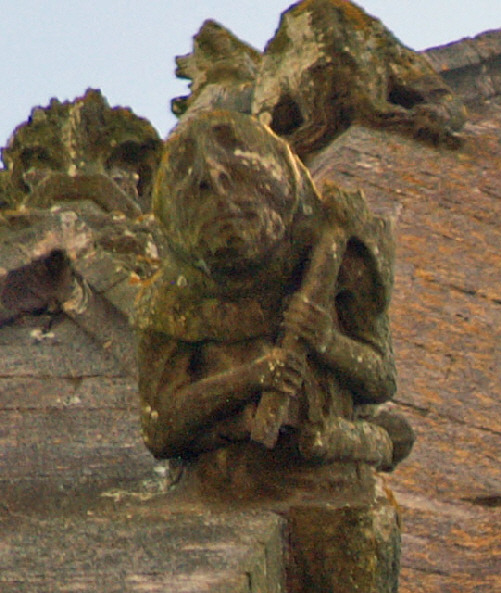|
|
||||||||||||||||||||||||||||||||||||||||||||||||||||||||||
|
Please sign my Guestbook and leave feedback |
||||||||||||||||||||||||||||||||||||||||||||||||||||||||||
|
Recent Additions |
||||||||||||||||||||||||||||||||||||||||||||||||||||||||||
|
This long series of articles has focused upon sub-parapet friezes and, to a lesser extent, gargoyles. I hope I have made it clear that the focus of this account has been not on the quality of those carvings but on what they tell us about the mediaeval church building “industry” at the start of the fifteenth century. I have mentioned around forty churches in the course of this narrative. Many of the friezes - the “qualifier” for being mentioned - are quite undistinguished, sometimes mediocre. I think then that it would be a pity to not show some of the outstanding non-frieze sculptures on some of these churches. As I have said in many places, larger showpiece one-off carvings - even when part of a larger series - are much more difficult to attribute to individual masons. That greater scale allows greater freedom of imagination and artistic flair than the friezes where large numbers of carvings are required and all must fit a small size template. It is well-nigh inconceivable that none of the larger sculptures on these churches are by the very same masons that were churning out endless grotesque faces and fleurons for friezes. It could be that many of these showpiece sculptures were by men hired specially for the job, but surely not all. There are similarities to be spotted between some of the sculptures at Churches A and B but to analyse those similarities and to draw conclusions about their sculptors would require an eye for art that I certainly don’t have. Even with the frieze it is a challenge to separate the certain from the probable and the possible, with confirmation bias a constant enemy. This section, then, looks at some of the best of the “other” sculpture at these churches so that they can be appreciated on their own merits and not as part of the broader narrative. Most of them will have been contemporary with the friezes but we can never be sure even of that. What is particularly interesting is that nearly all of these are from outside the Mooning Men Group’s work. They did very little sculpture - in fact no sculpture - outside the friezes and gargoyles. It suggests that they were unable to rise to that challenge. Here we go then: some of the creme de la creme. |
|||||||||||||||||||||||
|
Boston (Lincolnshire) |
|||||||||||||||||||||||
|
Boston is interesting because it was a church rebuilt from the ground up, and we know John Oakham was responsible for some of the sculptured friezes there. There is a great deal of good quality sculpture there, but my favourite is a balustrade on the north aisle that has these magnificent carved panels. Are they by John himself? I think there is a very good chance. |
|||||||||||||||||||||||
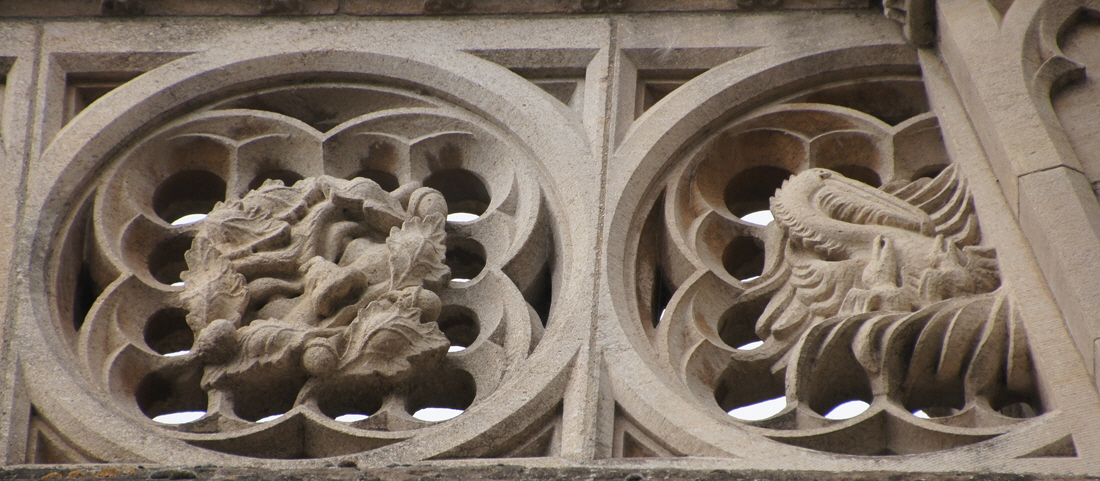 |
|||||||||||||||||||||||
|
Here we have two very familiar images. On the left a rather lovely green man. He has acorns as well as leaves sprouting from his mouth. What a vibrant carving this is. On the right a pelican in her piety, perhaps the most ubiquitous sacred image in the English mediaeval church. The eyes are John Oakham-like. |
|||||||||||||||||||||||
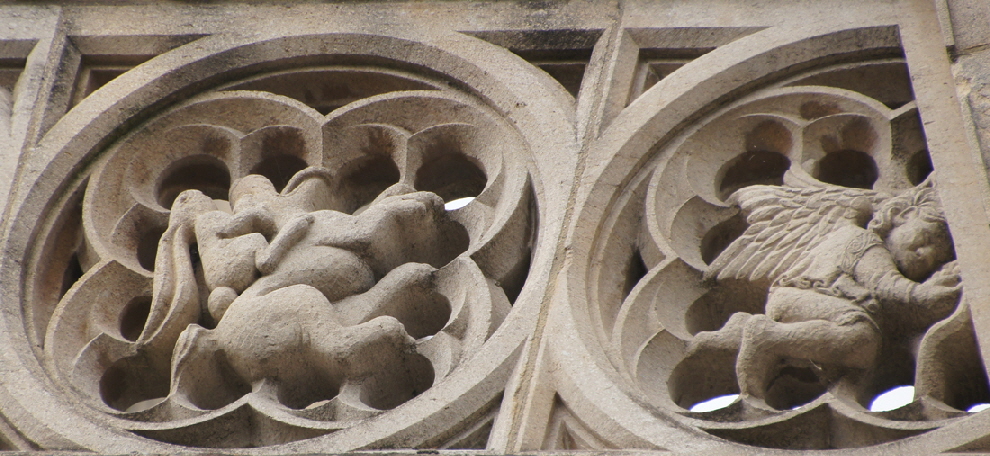 |
|||||||||||||||||||||||
|
On the left here we have a world-turned-upside-down image. A rabbit with improbably long ears rides on the back of a rather roly-poly dog. On the right a cherubic figure. |
|||||||||||||||||||||||
 |
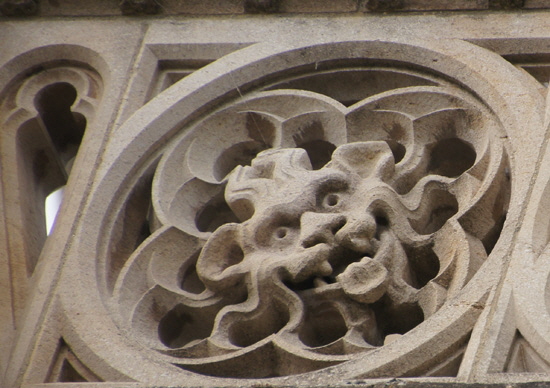 |
||||||||||||||||||||||
|
On the left is the most puzzling of these carvings. Two men with asses ears are back to back - or even joined together. Those asses ears seem to be part of a costume the men are wearing - they are possibly jesters. On the right is an image very like John Oakham’s cow-lion faces. |
|||||||||||||||||||||||
|
Welbourn (Lincolnshire) |
|||||||||||||||||||||||
|
As with Boston, I think that John Oakham was involved with the scrappy frieze at Welbourn, possibly in conjunction with his acolyte Simon Cottesmore. Apart from perhaps contributing to the picture of how far and wide John ranged it is of little interest. Alongside that apology for a frieze, however, are some of the best sculptures you will see on a mediaeval parish church. I do suspect that John Oakham was responsible for at least some of these but it is just that; a suspicion, albeit an informed one. The gem here is the most sinuous and alluring of mermaids - but the village band also takes some beating. |
|||||||||||||||||||||||
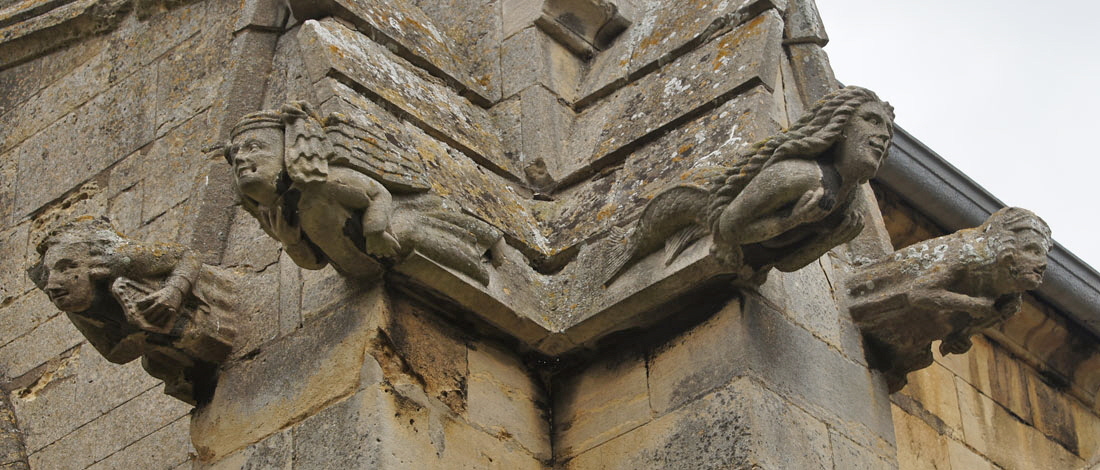 |
|||||||||||||||||||||||
|
This is one of the most distinguished - and best-preserved - groups of carvings I have seen on a parish church. The mermaid (second right) is sinuous and - er - fishy. See her long tail and fin and mote the beautiful braided hair. Her hands and forearms cover her breasts in a rare example of self-restraint by the sculptor. The face is very human. If the mermaid was really intended to warn against the disappointments of lust (and by now I suspect it was mainly a decorative trope) then this siren fits the bill beautifully. To her left we see a woman with a head roll framed by a thick veil,. Her face, again, is very human but on her back appear to be some wings. Presumably she is an angel - the antithesis of the piscine hussy to her right. Her headdress appears to be artisanal. This doesn’t look like a woman of the highest echelons of society but a respectable one for sure. Far left We see one of the members of the village band clutching a harp. Far right is another musician. |
|||||||||||||||||||||||
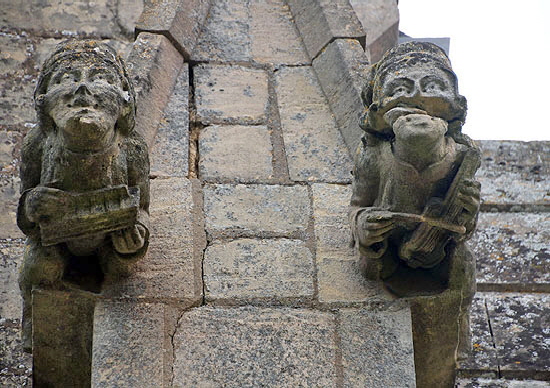 |
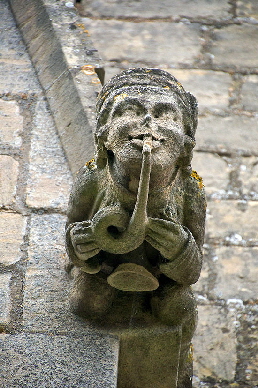 |
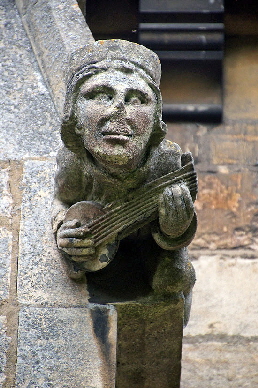 |
|||||||||||||||||||||
|
Is Welbourn’s the most complete set of musician carvings in England? I suspect someone out there will know of a better one but I don’t. Identifying mediaeval instruments is a bit of a nightmare because there is always someone who is able to contradict me. But I will stick my neck out. Left: A hurdy gurdy player and a viol player. Centre: I am guessing this is meant to be a serpent. Serpents, in fact, did not have loops in their bodies as this one does, but sinuous curves. I presume that helped to keep it to a manageable length. It could be that this was the best representation the mason could manage. Or it could be another instrument altogether. Anyway, the bell end at least is right for a serpent. Right: This looks like a banjo but, of course, it isn’t (and I, by the way play banjo myself!). I don’t think it is a lute because a lute has a very fat body and a very short fingerboard. It could be a mandolin (I play that as well!). This instrument has six strings, though, and a mandolin has eight or (rarely) ten arranged in pairs. A cittern is another possibility but, again, the number of strings is wrong. I think we have to assume the sculptor knew what he was trying to do but that his knowledge of musical instruments was not quite up to speed. |
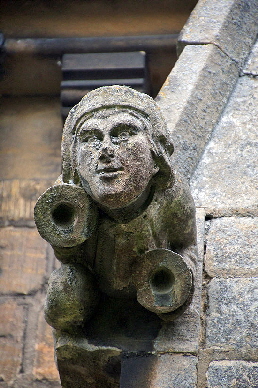 |
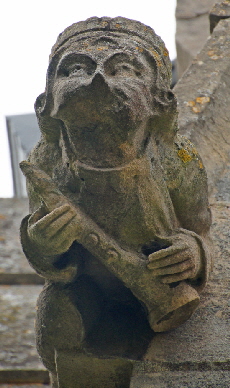 |
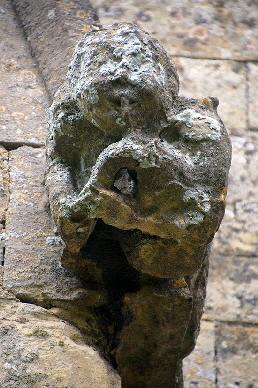 |
|||||||||||||||||||
|
Left: I think I am on safe ground is averring that this is a cymbal player! Centre: And now I am in trouble again. A rather nondescript woodwind instrument that might well be a shawm. Right: Brits in general, and Scots in particular, tend to think that the blown bagpipes (as opposed to the elbow operated bagpipes such as are found in Ireland and Northumberland) are unique to the wild lands north of Hadrian’s Wall. In fact, the bagpipe was and is found all over Europe, although the number of drones on a Highland bagpipe is indeed pretty well unique. This Welbourn piper is only one of many to be found on English parish churches. Quite why he is so badly weathered is a bit of a mystery when the others are so well-preserved. Perhaps the quarry fobbed the parish off with a chunk of rubbish? |
|||||||||||||||||||||
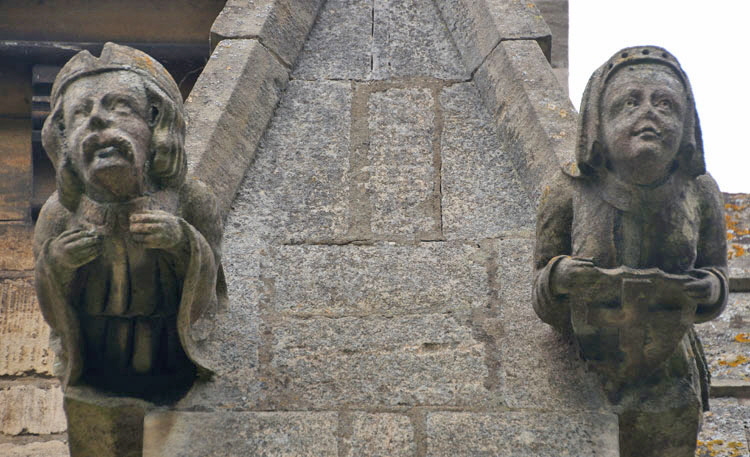 |
|||||||||||||||||||||
|
Finally. I was very taken with this pair. Surely man and wife and surely “real” people. Who were they? |
|||||||||||||||||||||
|
Staunton-in-the-Vale (Nottinghamshire) |
|||||||||||||||||||||
|
I have not been able to pin Staunton-in-the-Vale’s frieze to the MMG or to John Oakham unfortunately. As at Welbourn, however, the frieze pales into medicrity when compared to the extraordinary sculptures on the church’s buttresses. I can’t hep feeling Stanton was where Walt Disney got some of his deas from! |
|||||||||||||||||||||
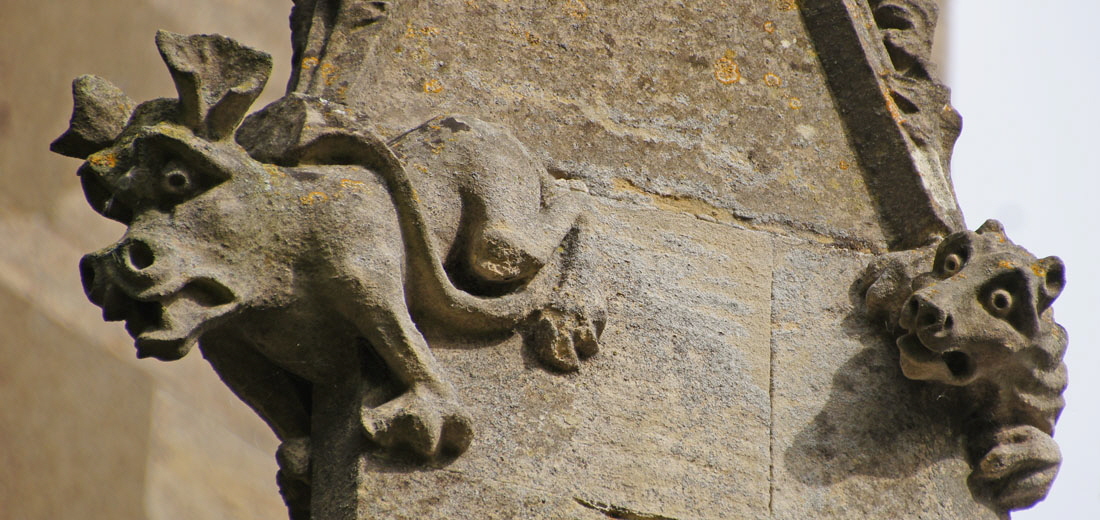 |
|||||||||||||||||||||
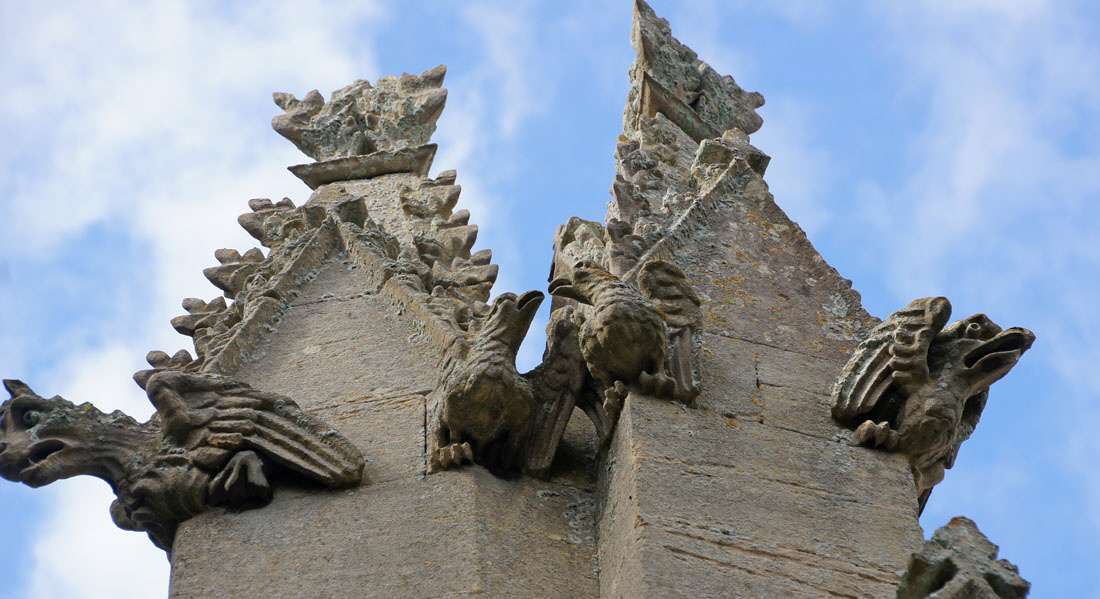 |
|||||||||||||||||||||
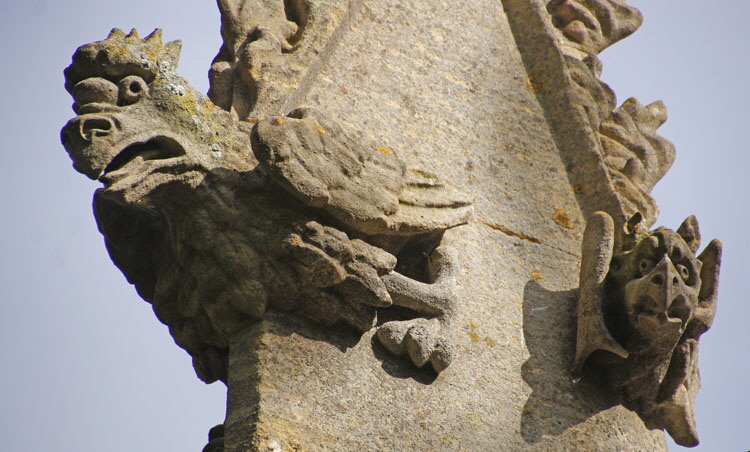 |
|||||||||||||||||||||
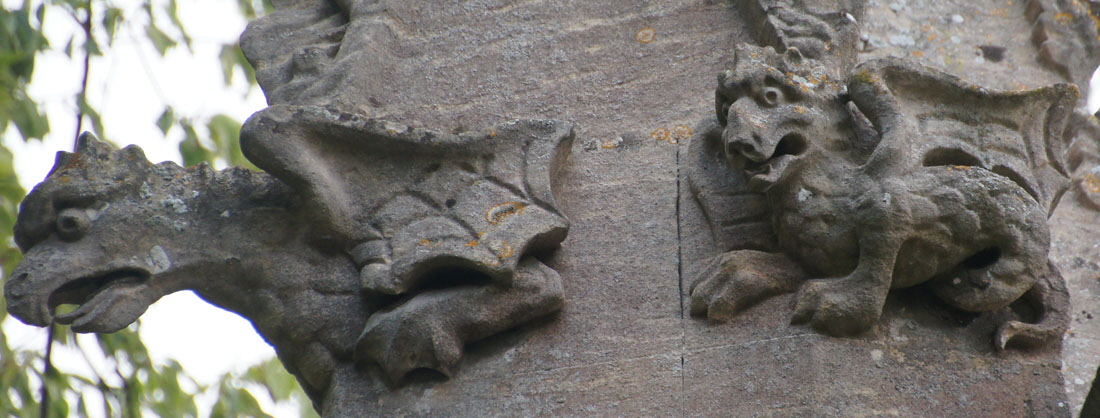 |
|||||||||||||||||||||
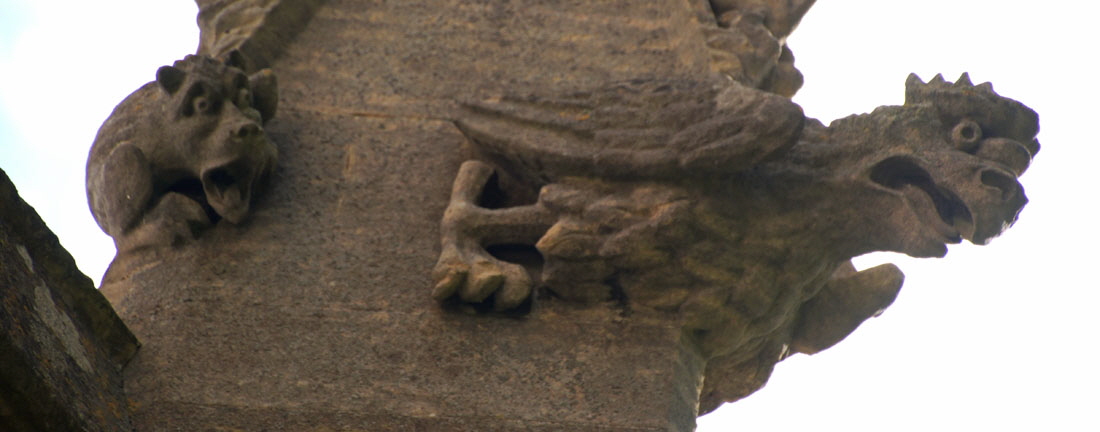 |
|||||||||||||||||||||
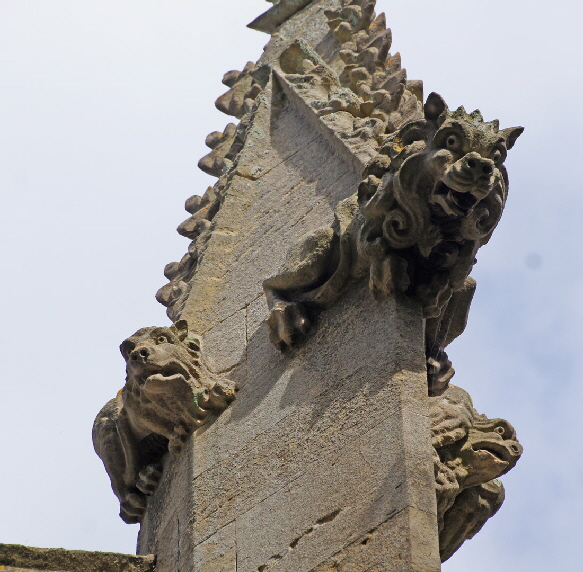 |
|||||||||||||||||||||
|
Claypole (Lincolnshire) |
|||||||||||||||||||||
|
I have Claypole down as a church where John Oakham was part of the sculptural team. This entertaining buttress carving is actually easy to overlook. Was it by John? I like to think it was. |
|||||||||||||||||||||
 |
|||||||||||||||||||||
|
Ewerby (Lincolnshire) |
|||||||||||||||||||||
|
Ewerby is part of what I call the “Sleaford Cluster” of four churches. They were apparently carved before the MMG and John Oakham were in their pomp but they might well have been themselves all attended by another group pf masons with a sculptural bent. They all feature a plethora of carvings on their spires and buttresses where many have weathered badly. I liked this pair of carvings at Ewerby that look to me to be pure filth... |
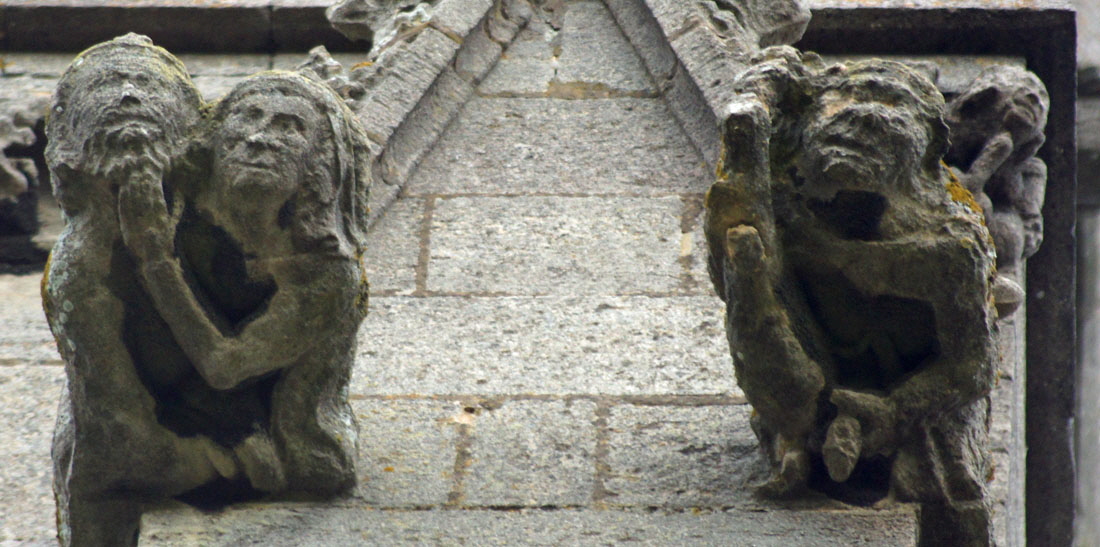 |
|
|
Ewerby is also one of five churches where a ragther unlikely-looking boat carving can be found. It’s a bizarre concept and Ewerby’s is perhaps the best example. |
|
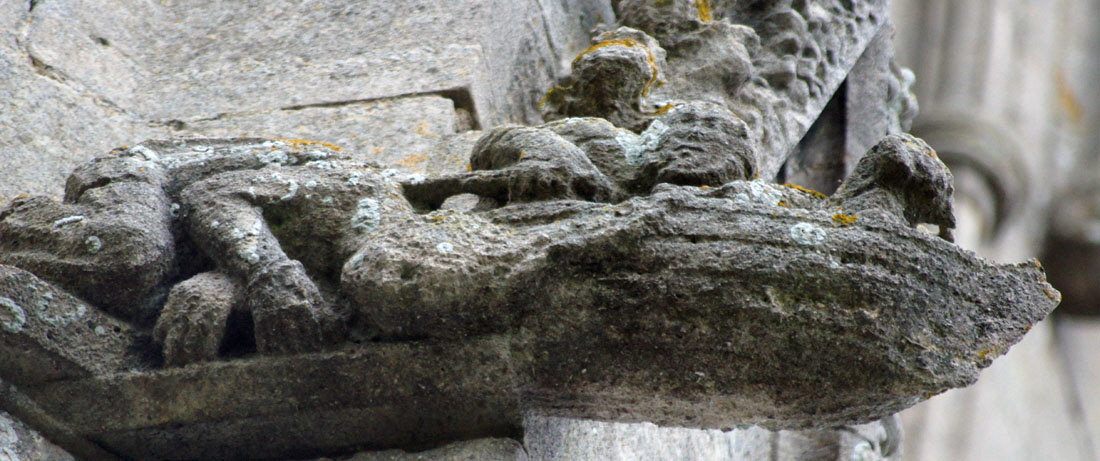 |
|
|
I have tried so hard to come up with an explanation for this carving and the others like it but have failed. There are a few biblical stories involving boats but none of these seems to fit and anyway overt Christian references rarely appear on the outsides if late mediaeval English parish churches, I wonder if it is a reference to the story of the “Ship of Fools”? |
|
Heckington (Lincolnshire) |
|
Heckington is famous for its sculpture. It is Heckington’s magnificent chancel furniture that is the showpiece, however. The exterior, I suppose, is famous more for its profusion of carving than its memorable imagery. It is part of my so-called “Sleaford Cluster” with Sleaford itself, and with Anwick and Ewerby. Weathering has, sadly, removed the detail of many of these carvings or all of these churches would be having huge galleries here. As a matters stand, this sample gallery for Heckington will have to suffice. The set piece sculptures as opposed to the friezes) on the other Cluster churches are very much of the same ilk - although, not it must be said, in anything like the same profusion. |
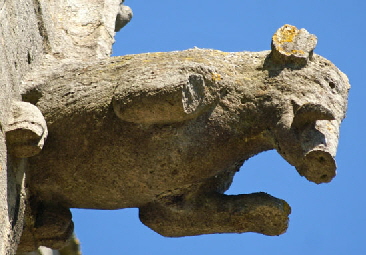 |
 |
|||||||||
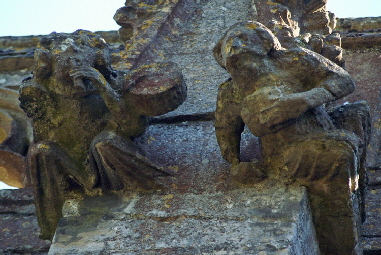 |
||||||||||
 |
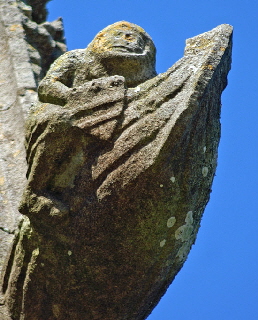 |
|||||||||
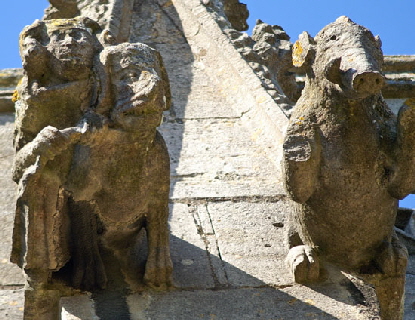 |
||||||||||
|
|
||||||||||||||||||||||||||||||||||||||||||
|
Exton (Rutland) |
|
The drip mould around the doorway to Exton Church has these two dragons as end stops. They look sleepy and shy as if Mummy Dragon has just put them into their den for the night You kind of feel that if someone made them into soft toys they would be best sellers. On a more serious note look at the way these figures have been carved as part of the hood mould. They were not carved as separate pieces and then mortared in. Class! |
 |
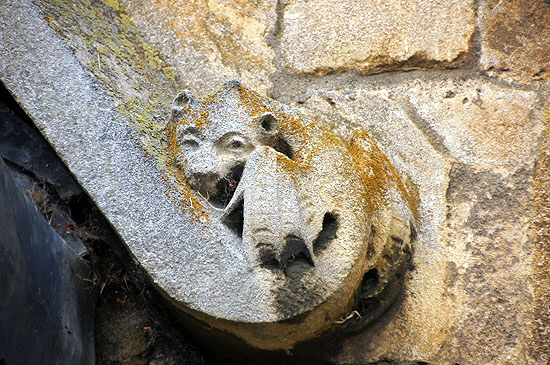 |
||||
|
Church Building in the Post-Plague Era The Peregrinations of John Oakham Other Great Sculptures (You are at the End!) |
|||||
